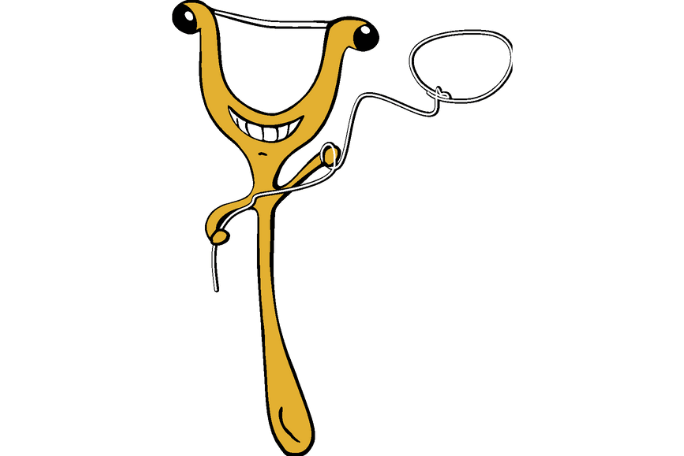Lesson summary
A fierce war is raging in the deepest darkest region of… your mouth! The Sneaky Sugar Army leads its attack on the Royal Teeth.
Who will save them?
Fortunately, the Guardians of the Gums are on hand to defeat plaque wherever it rears its ugly head. These heroes don’t need superpowers to take care of teeth, and neither do students!
This lesson is an accessible, engaging and informative way to get young students thinking about oral hygiene and dental care. Each Guardian has a unique role in taking care of teeth, enabling students to create strong associations with their own oral hygiene routines.
Learning intentions:
Students will...
- understand ways to look after their teeth.
Success criteria:
Students can...
- name the Guardians of the Teeth
- describe at least three different things the Guardians of the Gums said they could do to protect their teeth
- mime a variety of actions for looking after their teeth
- demonstrate their understanding by thinking creatively to apply the Guardians to a different situation in a new story.
Lesson guides and printables
Lesson details
Curriculum Mapping
Learning Outcome 3: Children have a strong sense of wellbeing
3.2 Children take increasing responsibility for their own health and physical wellbeing
Learning Outcome 4: Children are confident and involved learners
4.1 Children develop dispositions for learning such as curiosity, cooperation, confidence, creativity, commitment, enthusiasm, persistence, imagination and reflexivity
4.2 Children develop a range of skills and processes such as problem solving, inquiry, experimentation, hypothesising, researching and investigating
Learning Outcome 5: Children are effective communicators
5.1 Children interact verbally and non-verbally with others for a range of purposes
5.2 Children engage with a range of texts and gain meaning from these texts
5.3 Children express ideas and make meaning using a range of media
This lesson is part of the wider unit of work SugarByHalf – Guardians of the Gums – Early Learning to Year 2
Time required: 45 mins.
Level of teacher scaffolding: Low – read the story, facilitate class discussion, support students working independently.
Resources Required
- Art supplies – coloured pencil and textas
- Device capable of presenting a video to the class
- Devices capable of creating digital media, such as an iPad or laptop – (optional) one per student
- Gluesticks
- Guardians characters images
- Guardians of the Gums story – You can read the pdf yourself or watch the video
- Lined paper or writing notebook
- Pens
- Scissors
- Teacher Slides – Available as PowerPoint slides or as a PDF. The PowerPoint includes animations so you will need to use the PowerPoint in presentation mode
- White Paper – A3 size
Additional Info
These lessons were developed in partnership with SugarByHalf and the Australian Dental Association. Guardians of the Gums was written by Bee Healthy Stories; if you would like to see more of their stories, head to Bee Healthy Stories.
SugarByHalf promotes action to reduce sugar-related diseases so that we can live better, stronger and healthier lives.
Their message is simple: to reduce added sugar consumption by half. Eating too much added sugar is a key driver of serious health problems including obesity, type 2 diabetes, heart disease, tooth decay, dementia and mental health conditions. A poor diet also puts children behind their peers, affecting brain development, sleep and ability to learn. Poor diet choices ultimately mean that this generation of children could be the first in modern history to live shorter lives than their parents.
Much of the added sugar in our diet comes from the processed foods and drinks we consume. On average, we consume 14-16 teaspoons of added sugar per day. Teenagers consume more than 20 teaspoons per day. The World Health Organisation says we should limit our daily added sugar intake to 6 teaspoons for good health. To put that in perspective, there are 4 grams of sugar in one teaspoon. If something has 20 grams of sugar, that's 5 teaspoons of sugar.
This English lesson focuses on developing the skills and knowledge students need to critically consider messages about food and drink they are exposed to, thereby equipping them to be able to make healthy choices.
Talking about Health:
- Be mindful of students who may experience weight stigma. Some students may be sensitive to conversations around weight, body size or shape. Terms including obesity, weight issues, weight-problem and fat can be stigmatising for some people because they assign blame. It is important to note individual preferences around language vary. Research has shown using the terms ‘weight’, ‘weight gain’, ‘healthy weight’, ‘unhealthy weight’, and ‘high BMI’ are preferred as better alternatives.
- Be mindful about how you use the word ‘diet’. We recommend focussing students on the positive impacts of healthy nutrition and healthy lifestyles which help us to have stronger bodies and minds, feel good and sleep well.
- Steer students away from any focus on appearances by communicating that appearance does not determine your worth. We recommend the fact sheets from the Butterfly Foundation on body image tips.
- Avoid using labels such as obese or diabetic. Refer to people living with diabetes, people living with cancer, people with high BMI etc.


Welcome back!
Don't have an account yet?
Log in with:
Create your free Cool.org account.
Many of our resources are free, with an option to upgrade to Cool+ for premium content.
Already have an account?
Sign up with:
By signing up you accept Cool.org's Terms and Conditions(Opens in new tab) and Privacy Policy(Opens in new tab).